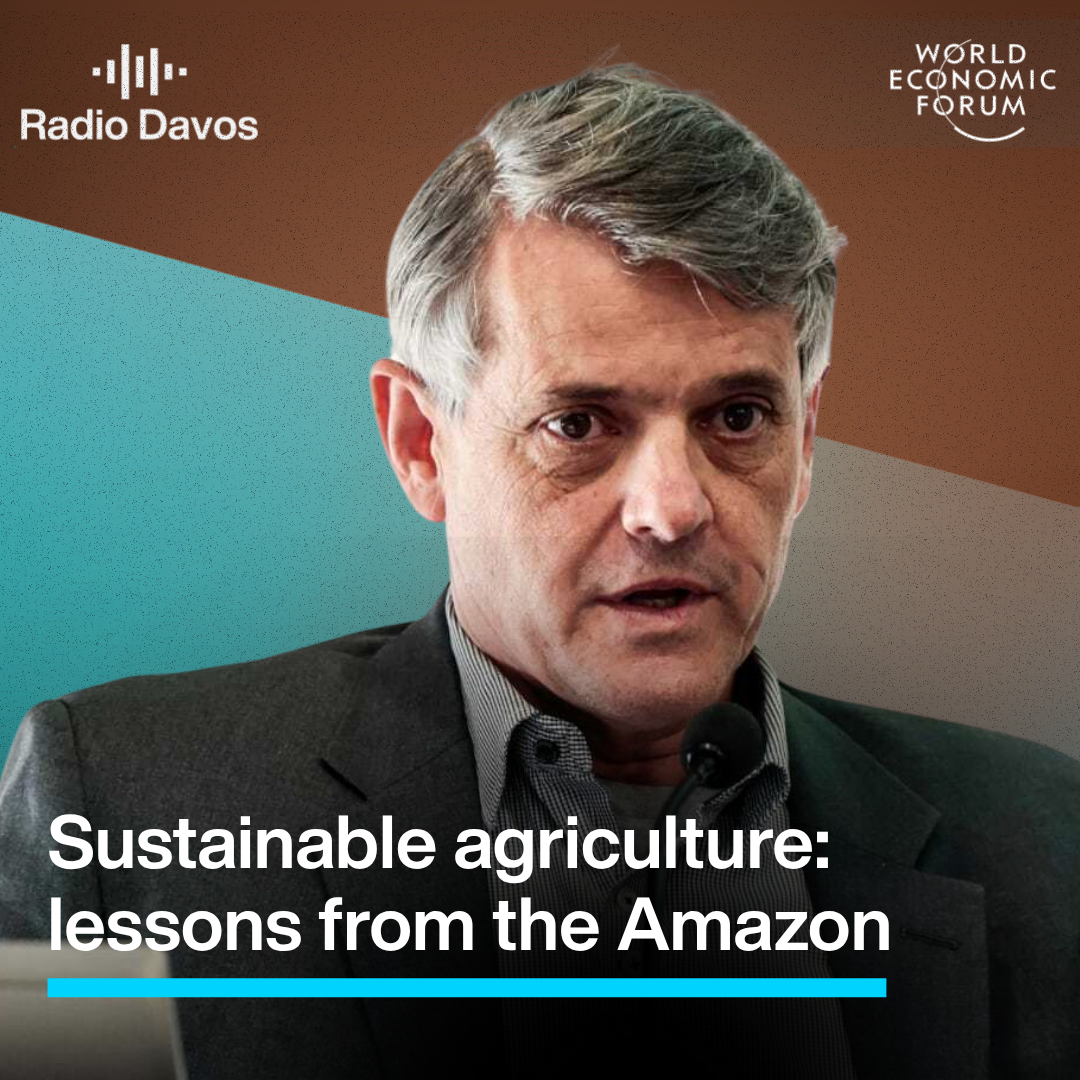The Australian wildfires are a reminder that we need to protect our forests. Here's how

Bushfires have caused devastation in Australia. Image: REUTERS/Alkis Konstantinidis
- Wildfires have hit Australia, the Amazon basin and the Arctic in recent months.
- But nature isn't just on the frontlines of a changing climate, it can help tackle emissions and boost resilience to climate change.
- These 3 strategies need to be urgently prioritized.
Forests don’t make headlines; forest fires do. Unfortunately, in the past year, forests have been in the news for the wrong reasons.
Wildfires are common during dry seasons in many forests around the world and contribute to the health of the forest by making way for new life. But the frequency and ferocity of fires is increasing. Major fires have burned across all continents except Antarctica in the past year. These fires are a harbinger of a new normal in a changing climate as scientists have longed warned.
Three damaging wildfires stood out: In Australia today, the scale of the fires is unimaginable. They are affecting an area bigger than small European countries and having enormous impacts on people and wildlife. They still aren’t extinguished, and future fire seasons could be even worse.
2019 also saw an uptick in fires in the Amazon Basin. There was a concern that the fires were following an increase in deforestation, which was later confirmed by official Brazilian data, and a deeper concern that parts of the forest may be reaching a tipping point.
In the Arctic, we saw troubling images of fires in Siberia and Alaska. Fires in the great boreal forests that circle the entire northern hemisphere are natural, but the scale of the fires in 2019 was unprecedented, with record high temperatures north of the Arctic Circle.
While different in scale, each of these fires has had significant effects: more and more people are being killed as fires become the new norm in many countries. Air quality is impacted as fires blanket whole regions with haze cities – Australia has recorded the worst pollution levels in the world – and wildlife is increasingly impacted. This all contributes to more carbon emissions to the atmosphere.
But this is not a story of despondency. Nature may be on the front lines of a changing climate. But it can also be one of our strongest allies to reduce emissions globally as well as enhance resilience for communities and landscapes. Nature-based solutions can deliver up to a third of the emission reductions needed to keep temperatures below 2oC. To harness this potential there are three strategies that the world must urgently prioritise:
1. Stop deforestation
Deforestation remains at near-record highs despite significant investment from the private sector to reduce deforestation in supply chains. The challenge is significantly more complex than any single actor can solve alone. Heading into 2020, it’s clear that companies need to redouble their efforts but also work more closely with governments and the finance sector to eliminate commodity driven deforestation.
We also need to recognise that an increasing amount of deforestation is driven by illegality and criminality in many countries, as well as by poverty. We must increase the political will to eradicate criminality, and we need to support greater investment in development and creation of economic alternative for smallholder farmers in situations where converting forest may be the difference between hunger and health.
None of this is easy that is why there is an urgent need for concerted collective action – looking at and working to improve all parts of the whole. That is how we stop deforestation.
2. Work together to manage fires
Learning to better manage fires will be critical for enhancing resilience and reducing the impacts of more intense and frequent fires. But there are few mechanisms to share knowledge and practices globally. Global Forest Watch and other platforms now offer more interactive tools for monitoring fires, but we are not learning nor celebrating the success of fighting fires.
For example, Indonesia has experienced several catastrophic forest fires, often made worse by peat land with a huge carbon store, which once ignited is difficult to extinguish. The fires of 2015 were estimated to have killed 100,000 people. The dry season of 2019 also threatened to be difficult, but improved fire management from both the government, which established a Peat Restoration Agency in 2016, and leading private companies like APRIL and APP, who run Fire Free Village programs around their estates have been successful at reducing instances and severity of fires.
In addition, indigenous communities around the world have worked with fire for centuries in many countries around the world to manage their landscapes. By setting fires early in the season, they can avoid catastrophic fires in the height of the dry season. I had the honour to spend a week with Aboriginal Rangers in the Kimberly and saw the pride and cultural significance of this work. There is potential to scale these efforts.
3. Accelerate restoration
Last, but by no means least, we need to unleash a global restoration movement. There is growing understanding that reforestation and better land management is one of the best solutions we have to actively drawdown carbon from the atmosphere and lock the carbon up in our forests, grasslands and wetlands. Scientists estimate there were 6 trillion trees after the last ice age, but we are now down to a little over 3 trillion.
The World Economic Forum launched a new platform 1t.org, a multistakeholder effort to support efforts to grow, restore and conserve 1 trillion trees around the world. By growing, restoring and conserving a trillion trees or more over the course of the next decade, we have the chance to reduce climate risk, enhance water security, reverse biodiversity declines and create millions of rural jobs.
None of these strategies are easy. But by eliminating deforestation, improving fire management investing in restoration, we have the chance to enhance our resilience in the face of changing climate, reducing climate risk, reversing biodiversity declines and enhancing water security. Most importantly we also have the opportunity to create millions of jobs for rural communities.
As we start new decade, it is imperative that we commit together to co-create a forest-positive future.
Don't miss any update on this topic
Create a free account and access your personalized content collection with our latest publications and analyses.
License and Republishing
World Economic Forum articles may be republished in accordance with the Creative Commons Attribution-NonCommercial-NoDerivatives 4.0 International Public License, and in accordance with our Terms of Use.
The views expressed in this article are those of the author alone and not the World Economic Forum.
Stay up to date:
Future of the Environment
Forum Stories newsletter
Bringing you weekly curated insights and analysis on the global issues that matter.
More on Climate Action and Waste Reduction See all
Planet in focus: The technologies helping restore balance – and other news to watch in frontier tech
Jeremy Jurgens
November 13, 2025






